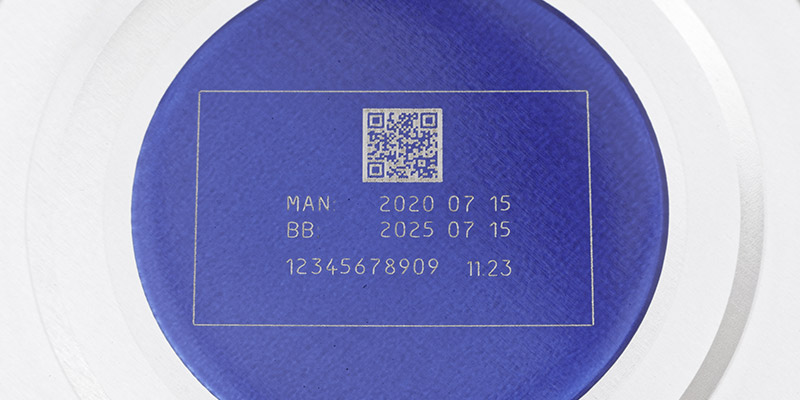The Project Scope
Jorgensen Engineering, based in Denmark, and Domino Printing Sciences’ Danish distributor (Domino Systems A/S), have a long-standing partnership in providing customised handling systems and coding solutions to large multinational food manufacturers.
In 2020 a large multinational food manufacturer, which has been successfully using Jorgensen handling systems and Domino coding solutions at various sites for decades, approached Jorgensen and Domino with a new challenge.

Domino CO2 lasers already marked blue-varnished tinplate can ends at various production sites of the food manufacturer. However, one site in France faced the additional challenge of also marking clear-varnished can ends. Therefore, they required a flexible solution to meet both requirements.
Jorgensen Engineering was already upgrading the existing filling and packaging line, where a handling station for can ends being laser marked from below was part of the upgrade. The aforementioned requirements were to be incorporated within the application.
Domino and Jorgensen flexible laser solution for marking cans
- Due to marking the can ends from below, different heights can be used without having to change the format or adjust the focus distance.
- Easier controllable risk of scattered or reflected radiation (impact of the laser beam on the rim of the can) when marking from below.
- By printing the can ends from below, two motor-driven can twisters can be removed from the infeed and outfeed stage of the production line. This helps to reduce energy consumption and maintenance costs.
- The extremely compact Jorgensen can coding system can be retrofitted to existing can lines.
- Both CO2 and fibre lasers can be integrated upon customer request.
- The robust design offers high performance with low maintenance.
- The retractable laser rack system enables user-friendly operation, easy cleaning and easy access to all components.
Domino’s approach to find a tailored solution
In order to find the best solution, Domino’s Laser Academy, based in Hamburg, were brought onboard the project. To allow for extensive testing, the multinational food manufacturer supplied numerous varnished and unvarnished can bottoms. With these, the Laser Academy were able to carry out tests with both CO2 and fibre lasers. They considered different power ranges, wavelengths, marking field sizes and focus lengths/spot sizes. To meet the new requirements, the team led by Stefan Stadler(Team Leader at the Domino Laser Academy), had to detect which laser system was most appropriate for the project. The solution needed to apply a QR code alongside alpha numeric text within a specified time and in a predefined quality grading, as the applied QR code must be readable by a smartphone camera.
Domino Laser Academy’s Findings
The investigations identified that the Domino F720i fibre laser was the ideal system for marking both the blue and clear varnished can ends. The planned print layout (QR code plus 4-line alphanumeric text) could be applied to the different cans(diameter, height and volume) within the timing and grading parameters. This was achieved by utilizing theF720i fibre laser at a maximum marking speed of 300 products per minute.
Fully comprehensive can coding station for maximum flexibility
In collaboration with Domino and the food manufacturer, Jorgensen Engineering has developed a complete laser marking solution integrated into a can handling unit.